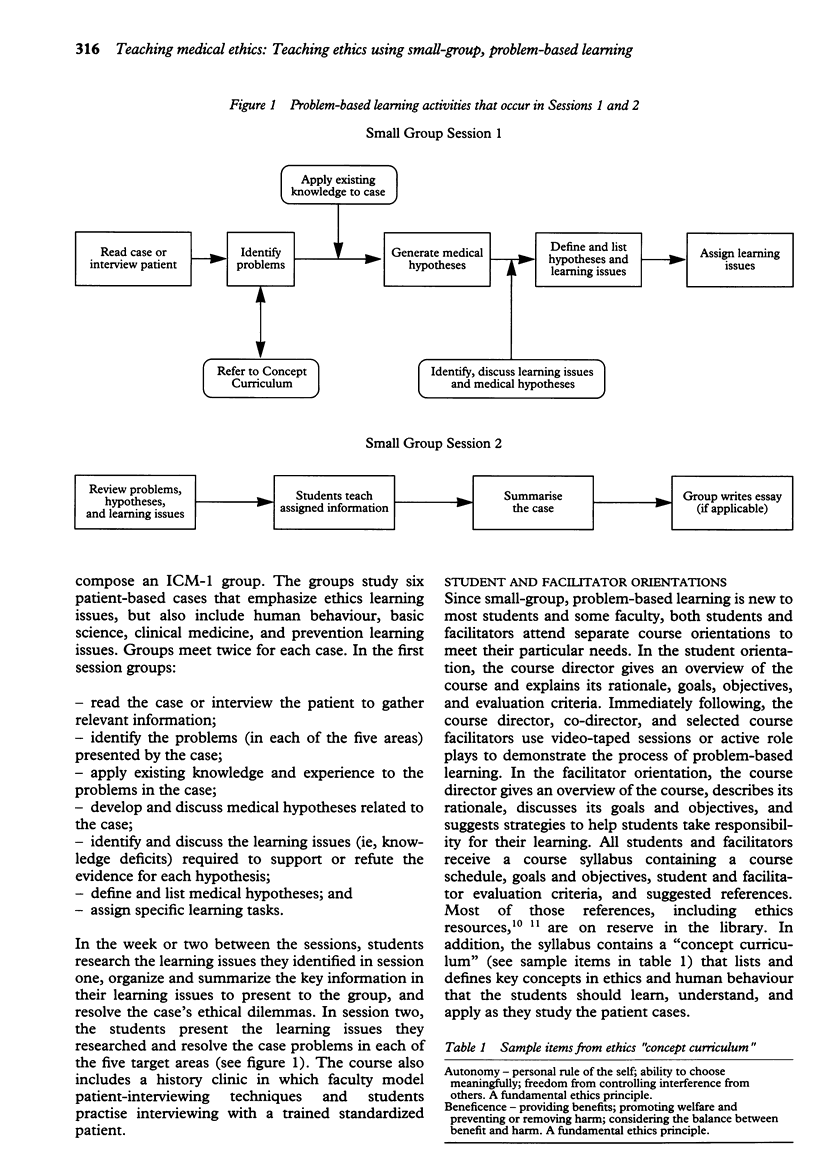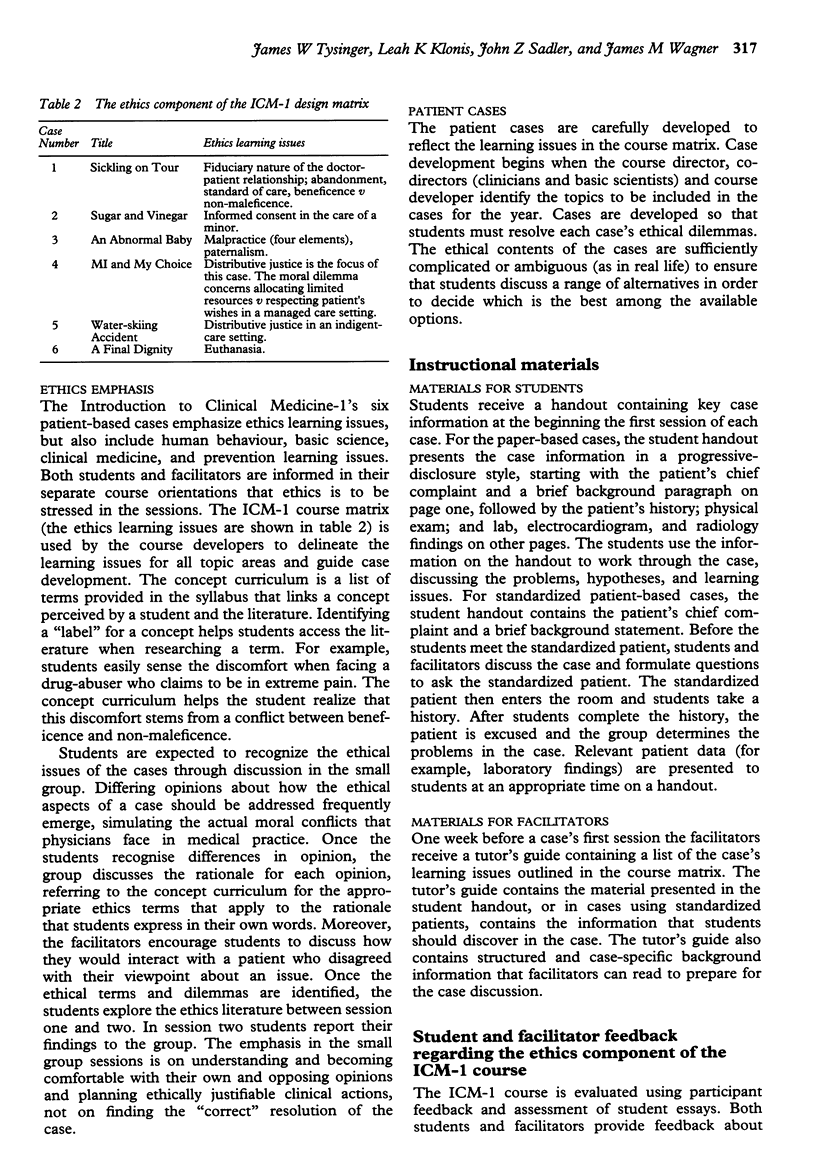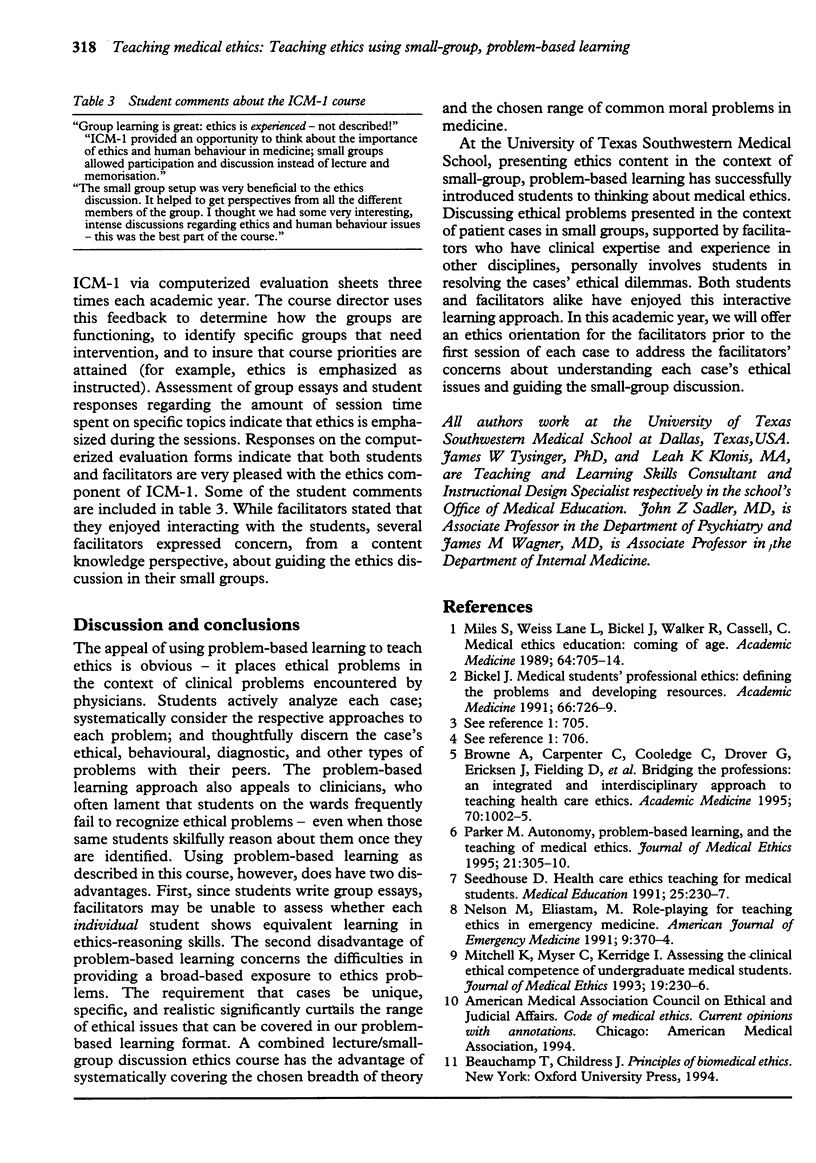Abstract
Ethics is the emphasis of our first-year Introduction to Clinical Medicine-1 course. Introduction to Clinical Medicine-1 uses problem-based learning to involve groups of seven to nine students and two facilitators in realistic clinical cases. The cases emphasize ethics, but also include human behaviour, basic science, clinical medicine, and prevention learning issues. Three cases use written vignettes, while the other three cases feature standardized patients. Groups meet twice for each case. In session one, students read the case introduction, obtain data from the written case or standardized patient, identify the case's ethical problems, formulate learning issues, discuss ways to resolve the moral conflicts, and assign research responsibilities. In session two, students discuss their assigned learning issues and specify and justify clinical actions to address the case's ethical dilemmas. Following three cases, groups write an essay discussing what they learned and describing how they would approach and resolve the case's learning issues.
Full text
PDF



Selected References
These references are in PubMed. This may not be the complete list of references from this article.
- Bickel J. Medical students' professional ethics: defining the problems and developing resources. Acad Med. 1991 Dec;66(12):726–729. doi: 10.1097/00001888-199112000-00003. [DOI] [PubMed] [Google Scholar]
- Browne A., Carpenter C., Cooledge C., Drover G., Ericksen J., Fielding D., Hill D., Johnston J., Segal S., Silver J. Bridging the professions: an integrated and interdisciplinary approach to teaching health care ethics. Acad Med. 1995 Nov;70(11):1002–1005. doi: 10.1097/00001888-199511000-00018. [DOI] [PubMed] [Google Scholar]
- Miles S. H., Lane L. W., Bickel J., Walker R. M., Cassel C. K. Medical ethics education: coming of age. Acad Med. 1989 Dec;64(12):705–714. doi: 10.1097/00001888-198912000-00004. [DOI] [PubMed] [Google Scholar]
- Mitchell K. R., Myser C., Kerridge I. H. Assessing the clinical ethical competence of undergraduate medical students. J Med Ethics. 1993 Dec;19(4):230–236. doi: 10.1136/jme.19.4.230. [DOI] [PMC free article] [PubMed] [Google Scholar]
- Nelson M. S., Eliastam M. Role-playing for teaching ethics in emergency medicine. Am J Emerg Med. 1991 Jul;9(4):370–374. doi: 10.1016/0735-6757(91)90061-n. [DOI] [PubMed] [Google Scholar]
- Parker M. Autonomy, problem-based learning, and the teaching of medical ethics. J Med Ethics. 1995 Oct;21(5):305–310. doi: 10.1136/jme.21.5.305. [DOI] [PMC free article] [PubMed] [Google Scholar]
- Seedhouse D. F. Health care ethics teaching for medical students. Med Educ. 1991 May;25(3):230–237. doi: 10.1111/j.1365-2923.1991.tb00056.x. [DOI] [PubMed] [Google Scholar]


